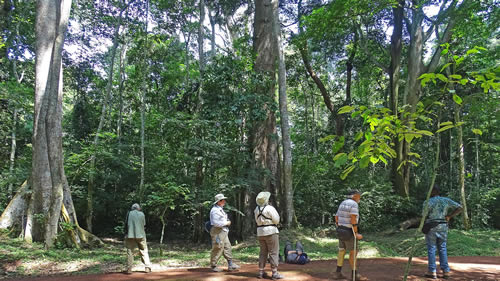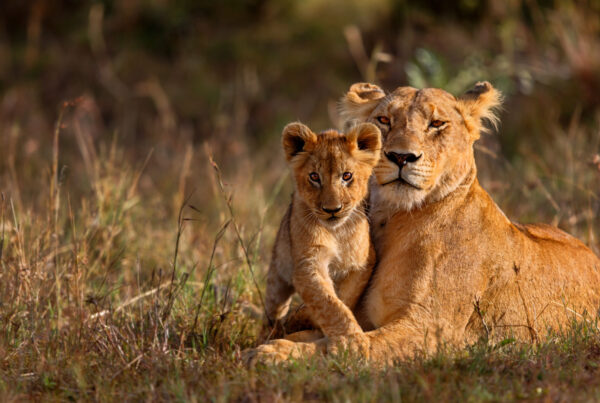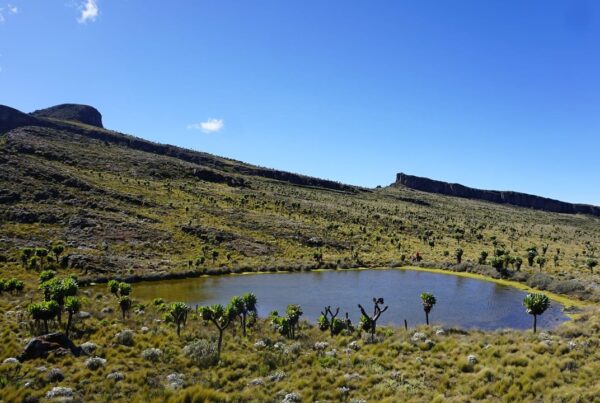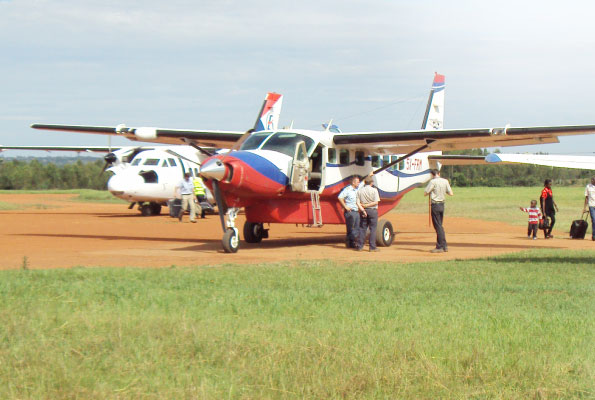Budongo Forest: Complete Guide to Photography Tour for Long-Stay Travelers
A Living Canvas of Nature and Time
Tucked within the northwestern corner of Uganda lies Budongo Forest, an expanse of ancient mahogany trees, rare primates, and vibrant birdlife. To the long-stay traveler, Budongo is not merely a stopover; it is a sanctuary where time slows, and where each day offers new scenes for the lens. Unlike brief visits that capture only fleeting glimpses, long stays allow travelers to become part of the rhythm of the forest, where the shifting light, the calls of chimpanzees, and the seasonal changes reveal a canvas that continually evolves. For the passionate photographer, Budongo Forest transforms into more than a destination—it becomes a living studio of raw beauty and untamed wonder.
Understanding Budongo Forest: A Timeless Haven
Budongo is one of the largest and most biologically diverse tropical rainforests in East Africa, stretching over 825 square kilometers along the southern edge of Murchison Falls National Park. The forest is famed for its towering mahogany trees, some of which are centuries old, creating a cathedral-like canopy that filters golden light through its dense foliage.
For wildlife photographers, this setting offers not only extraordinary backdrops but also encounters with creatures that define the essence of East African biodiversity. From over 360 recorded bird species to the habituated chimpanzee families that move through its depths, Budongo allows long-stay travelers the luxury of time to refine photographic techniques and capture fleeting moments that single-day visitors often miss.
Why Budongo Appeals to Long-Stay Travelers
Budongo Forest is not rushed. Its allure lies in the way it unveils itself gradually, rewarding patience with unique sightings. For long-stay travelers, the opportunity to spend several days or weeks within or around the forest provides depth of experience. Each day reveals new patterns—mist lifting at dawn, birdsong announcing the morning, chimpanzees roaming the canopy, and sunsets casting amber hues over the treetops.
The slow pace encourages deeper connections, allowing travelers to experiment with photography in diverse conditions. Unlike short safaris where moments feel hurried, long stays make it possible to perfect shots of elusive subjects, revisit favored sites, and develop a personal narrative of the forest’s life. For families, solo adventurers, and couples alike, Budongo becomes a place where both memory and artistry can be crafted.
The Photographer’s Landscape: Capturing the Forest’s Essence
Photography in Budongo begins with the forest itself. The towering mahoganies and fig trees create vertical dimensions that test the skills of framing and scale. Long-stay travelers have the advantage of revisiting these natural landmarks under different conditions, from early morning mists that cloak the trees in mystery to sharp midday light that accentuates the textures of bark and leaves.
Waterways within the forest, such as seasonal streams and small swamps, add reflective surfaces that can transform compositions into mirrored landscapes. The interplay of water and light becomes a recurring theme, offering endless opportunities for experimentation. At night, with patience and the right equipment, the dense canopy gives way to open skies, where long-exposure photography captures the movement of stars above the ancient forest.
Wildlife Encounters Through the Lens
Chimpanzees: The Heart of Budongo Photography
The highlight of Budongo is its population of chimpanzees, many of which are habituated for tourism and research. Long-stay travelers gain the extraordinary privilege of following these primates over several days, observing their shifting behaviors and moods. A single day may present only glimpses of grooming or feeding, but a longer stay reveals complex interactions—mothers carrying infants, males asserting dominance, and playful juveniles tumbling in the branches.
Photographing chimpanzees requires patience, low-light skill, and respect for their space. The forest canopy often filters light unevenly, challenging photographers to adjust settings for clarity and sharpness. The reward is profound: images that tell not just of chimpanzees but of the bonds, expressions, and emotions that echo humanity itself.
Birds, Butterflies, and the Small Wonders
Beyond primates, Budongo is a haven for birders and macro-photographers. From the rare Puvel’s illadopsis to the striking chocolate-backed kingfisher, the forest brims with avian life. Long-stay visitors benefit from the ability to explore different habitats within the forest, increasing chances of capturing rare species.
Butterflies, often overlooked, add color and delicacy to the portfolio. Their fleeting movements demand both patience and fast shutter speeds, while the damp forest floor often provides natural settings where they pause long enough for clear shots. Such details give depth to a photographic collection, ensuring it reflects the fullness of the forest’s biodiversity.
Cultural and Historical Dimensions of Budongo
Budongo is not only a natural wonder but also a cultural landmark. The forest has long been intertwined with the traditions of local communities, who consider it both a source of livelihood and a sacred space. For long-stay travelers, there is time to engage with the stories and cultural perspectives of those who have lived alongside the forest for generations.
Photographs taken in this context carry more than beauty; they hold meaning. Scenes of community members guiding visitors, sharing knowledge about medicinal plants, or recounting myths tied to the mahogany trees enrich a portfolio with narrative depth. They remind the traveler that Budongo is a living space where humans and wildlife coexist in layered harmony.
Seasons and Light: Timing the Perfect Shot
Photography in Budongo is deeply influenced by its seasons. During the dry months of December to February and June to September, trails are more accessible, wildlife encounters are frequent, and light conditions are more predictable. For long-stay travelers, these months allow for extended exploration without interruption from heavy rains.
The wet seasons, from March to May and October to November, present a different atmosphere. Rains drape the forest in vivid greens, and mist lingers among the trees. Although conditions can be challenging, the photographic results are remarkable—dramatic light, reflections in rain puddles, and scenes imbued with atmosphere that cannot be replicated in the dry season. For long-stay visitors, the wet months provide an edge, as patience yields some of the most ethereal images of Budongo’s character.
Practical Tips for Long-Stay Photographers
A long-stay in Budongo offers both opportunity and challenge. The dense canopy requires careful management of light, often pushing photographers to embrace higher ISO settings and wider apertures. The forest’s unpredictable weather makes protective gear essential for equipment, ensuring cameras remain safe during sudden showers.
Beyond technical considerations, patience and observation remain the most powerful tools. Long-stay travelers can afford the time to wait for perfect conditions rather than rush shots. This extended presence encourages a deeper photographic style—images that are not merely snapshots but stories told through light, subject, and setting.
Living the Experience: Accommodation and Immersion
Accommodations near Budongo range from simple forest lodges to comfortable camps set against the backdrop of nature. Long-stay travelers often choose lodges close to research stations or eco-tourism centers, allowing them to spend more time within the forest. The evenings are as rewarding as the days, with the sounds of the forest enveloping travelers in a rhythm that deepens their connection to the place.
Meals often feature local produce, adding cultural immersion to the stay. Conversations with guides and researchers enrich understanding, helping photographers refine their focus not just on aesthetics but also on ecological significance. Living near Budongo for an extended period transforms the experience into one of both discovery and belonging.
A Forest That Shapes the Lens
To the long-stay traveler, Budongo Forest is not just visited—it is lived. The forest changes with each passing hour, rewarding persistence with layers of beauty unseen in haste. Through chimpanzees that mirror human connection, birds that flash color against green canopies, and trees that have stood for centuries, photographers craft more than images. They create records of time, space, and relationship.
Budongo teaches patience, observation, and reverence, qualities that enrich both artistry and spirit. Each photograph becomes more than a visual memory; it becomes a story of immersion, a tribute to nature, and a reminder that the world still holds places where wildness remains untouched.
Plan Your Photography Journey
For travelers seeking to embrace Budongo Forest in its fullest expression, careful planning and expert guidance make the difference between a fleeting visit and a transformative journey. To ensure your long-stay photography tour is seamless, memorable, and rich in experience, it is recommended to book your Africa tours and safaris through WildHorn Africa, where every detail is thoughtfully crafted to let you focus on the art of photography and the wonder of the forest.





 WildHorn Africa – Authentic and unforgettable tours across Africa, guided by local experts who know the land, wildlife, and culture best.
WildHorn Africa – Authentic and unforgettable tours across Africa, guided by local experts who know the land, wildlife, and culture best.


